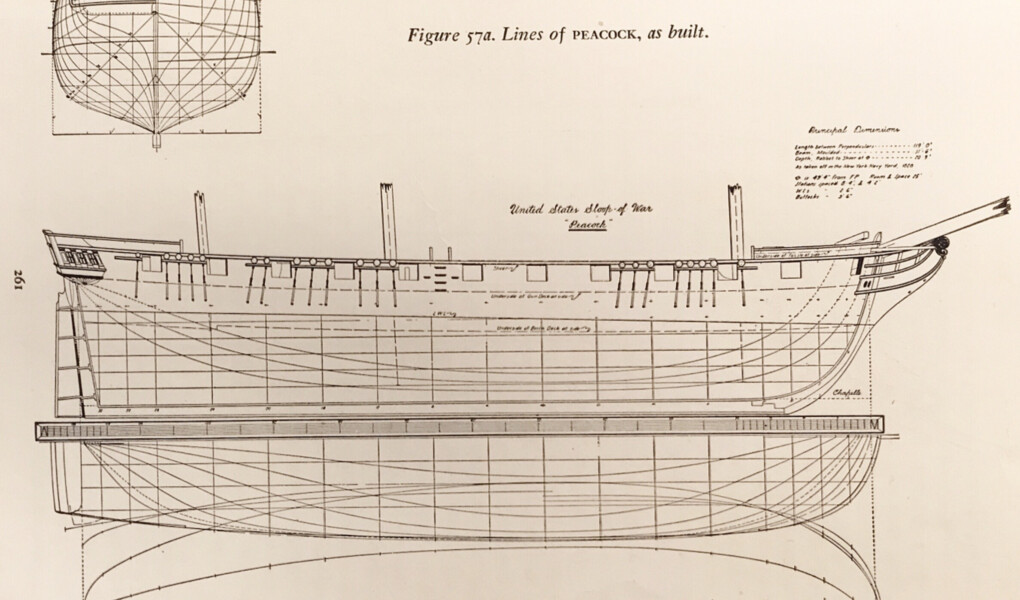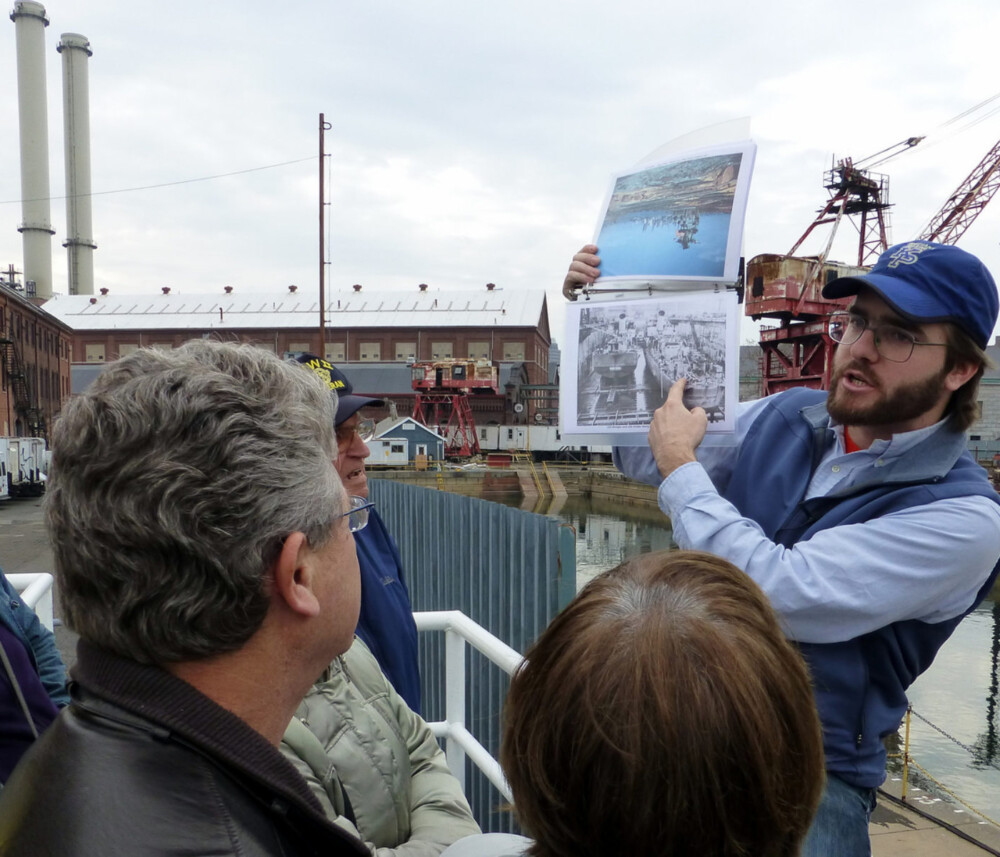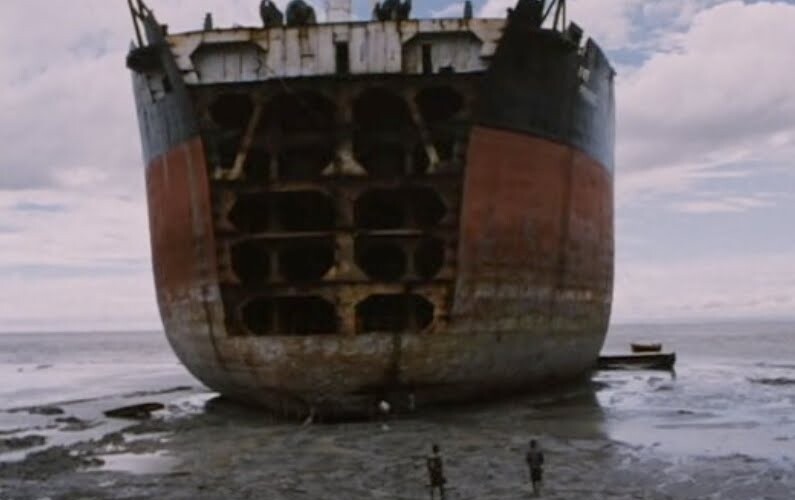For the past two years, we have had the opportunity to work with third and fourth graders in the Brooklyn Historical Society’s CASA program. These young scholars are tasked with writing a book about a place or story important to Brooklyn’s history. In 2018, we helped students learning about Prospect Park, Green-Wood Cemetery, Greenpoint, and the Empire Stores. This year, students from PS 380 in Williamsburg took on the Brooklyn Navy Yard. The students decided to look at the Yard’s history through the lens of some of its famous ships, Arizona, Maine, and Fulton among them, but also the little-known Peacock.
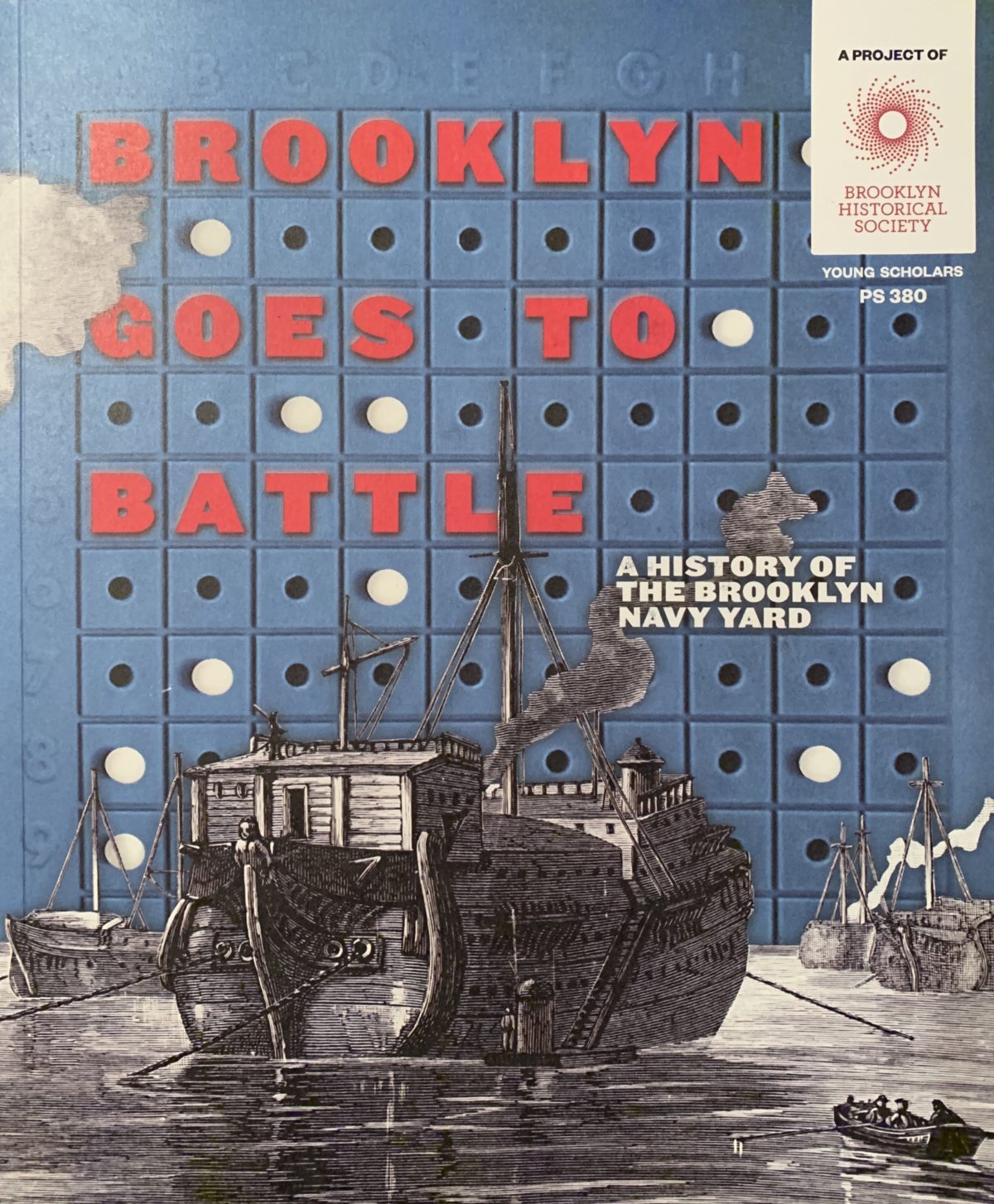
USS Peacock is a difficult ship to study because its history is a little confusing. If you look in the Dictionary of American Naval Fighting Ships, the most comprehensive listing of US Navy combat vessels, the ship is listed as being built at the New York Navy Yard in 1813, but by Noah and Adam Brown, a private shipbuilding firm. The ship was rebuilt in 1828, also at the Navy Yard, and it served until 1841, when it was lost on the bar at the mouth of the Columbia River. The story seems simple enough, but the Peacock raises an important but vexing question:
What was the first ship built at the Brooklyn Navy Yard?
Well, the answer depends on your definition of “first,” “ship,” “Brooklyn,” and “Navy Yard.”
The Yard Before the Navy
The site of today’s Brooklyn Navy Yard was really the birthplace of shipbuilding in Brooklyn. The first ocean-going vessel to be built in Kings County, on the shores of the Wallabout Bay, was the merchant ship Canton, constructed by John Jackson in 1798. The following year, Jackson launched a ship built for the US Navy, the 28-gun frigate USS Adams. So these two were the first ship and the first warship, respectively, built on this ground.
Officially, the New York Navy Yard was established on February 23, 1801, the date the US Navy completed the purchase of 40 acres from Jackson, including the shipyard. Lengthy legal battles and Congressional investigations bogged down the nascent Yard, and the Navy didn’t build any new structures there until 1807.
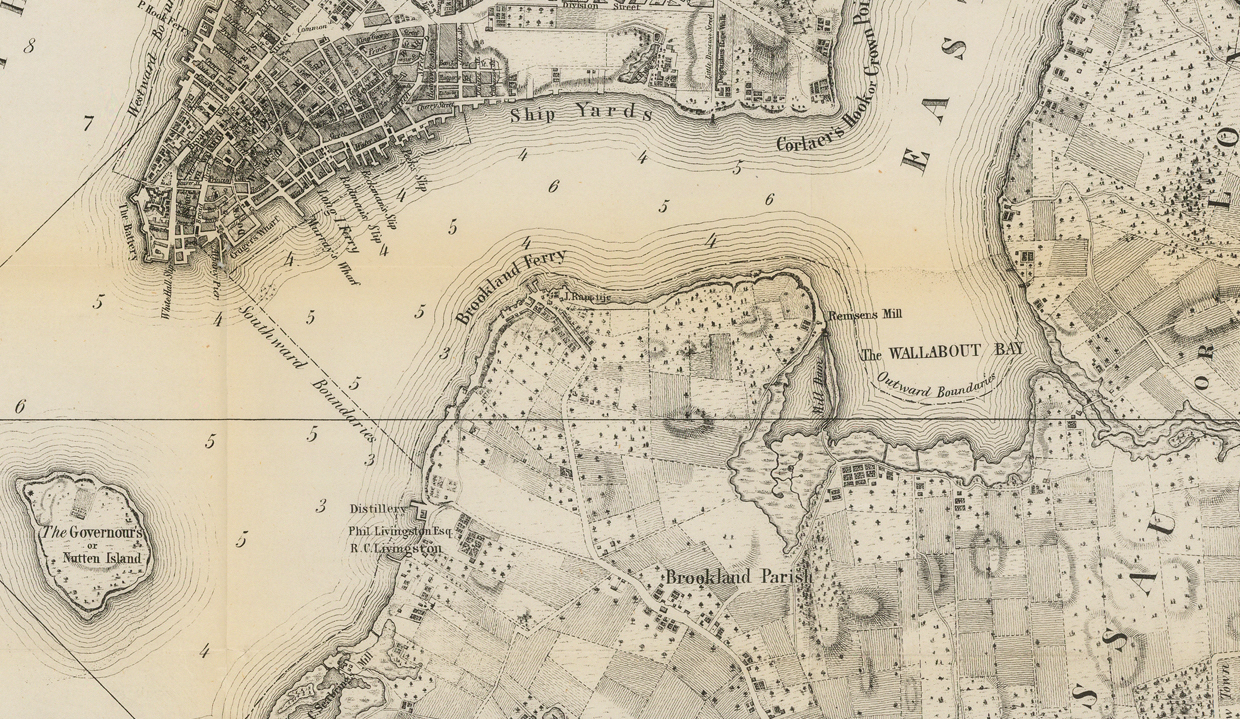
Building the First Peacock
The first spark of activity came during the War of 1812, when the Yard was tasked with outfitting and converting ships for blockade running and privateering. In March 1813, Congress authorized the construction of six new sloops of war. The contract for Peacock was awarded to the Browns, who utilized the Navy Yard for construction, even though they operated their own shipyard across the East River in Corlears Hook, which was one of the largest centers of shipbuilding in the country, and had been even before the Revolutionary War.
But shipbuilding was a hard business in the War of 1812, as a British blockade kept most American ports bottled up. Consequently, many of the best shipbuilders were called to service on the northern lakes, where it was a much more even military contest. The Browns had spent the previous winter working on Lake Erie, and they returned to New York City to hurriedly build the Peacock; they commenced construction on July 9 and the ship was launched on September 27, 1813, taking less than 12 weeks. Shortly after completing the ship, they went back up north, building the squadron on Lake Ontario alongside designer and future Brooklyn Navy Yard chief constructor Henry Eckford, and with former and future Brooklyn Navy Yard Commandant Isaac Chauncey. They then moved to Lake Champlain, where they built ships that fought in the decisive Battle of Plattsburgh.
Peacock did make it past the British blockade in March 1814, and it served exceptionally well as a commerce raider. Under the command of Capt. Lewis Warrington, it captured or destroyed 14 British vessels, including the warship HMS Epervier. After returning to New York, Peacock set out again on January 23, 1815, unaware that the Treaty of Ghent had been signed, ending the war, and continued attacking British ships for another nine months in the Atlantic and Indian Oceans.
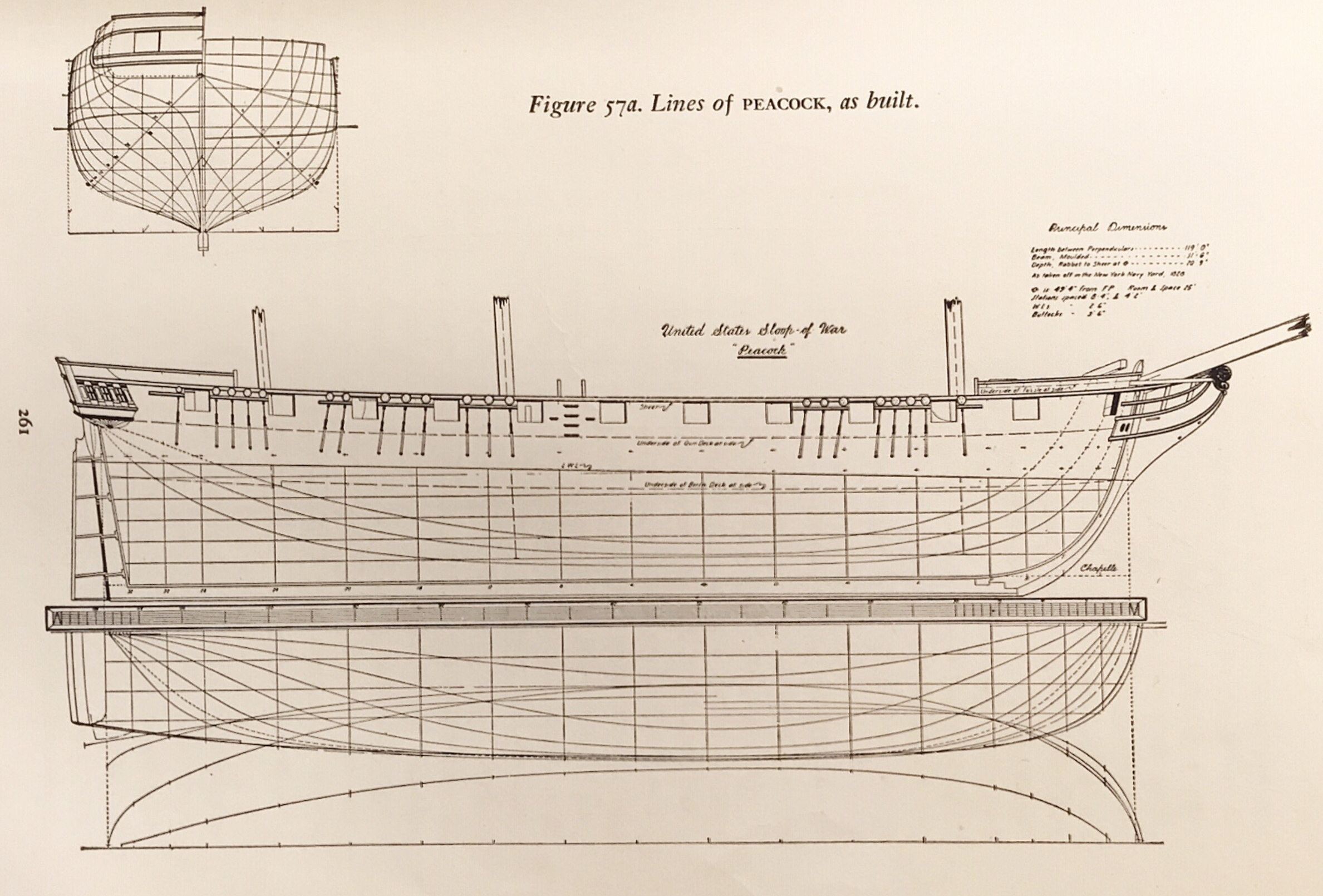
Meet the New Peacock. Same As the Old Peacock?
Peacock does appear among all the official lists of ships built at the Brooklyn Navy Yard, but not in 1813. After 14 years of hard service around the globe, the Peacock was decommissioned at the Brooklyn Navy Yard in October 1827. The decision to break up the ship was made in part because of severe damage suffered the previous March, when it collided with a sperm whale off Hawaii. This incident is referenced in Moby Dick and was likely told to Melville directly by the Peacock’s commander Thomas Catesby Jones, whom Melville served under in 1843 aboard the USS United States.
But Peacock wasn’t just broken up; officially it was “rebuilt,” even though very little of the original ship became part of the recommissioned one. This was a common practice in the Navy throughout the nineteenth century, as Congress was notoriously tightfisted when authorizing funding for new ships. To get around this restriction, the Navy would instead tap into budgets for repair, knowing full well that they were essentially building brand new ships (similar to the budgetary shenanigans used to acquire the Brooklyn Navy Yard itself). In fact, the Navy would keep in its arsenal ships it knew to be completely derelict and unfixable just so Congress would apportion funds for repairs, which the Navy could then divert to other projects.
This creative budgeting would periodically erupt into scandal, as it did with several ships at the Brooklyn Navy Yard after the Civil War. It has also created great confusion for historians trying to trace the lineage of ships. As an example, Baltimore’s historic ship Constellation was long believed to be the frigate built in 1797, but later investigations found that it was a completely new ship of the same name built in 1854, but with token timbers from the older vessel, and with funds allocated from the repair budget.
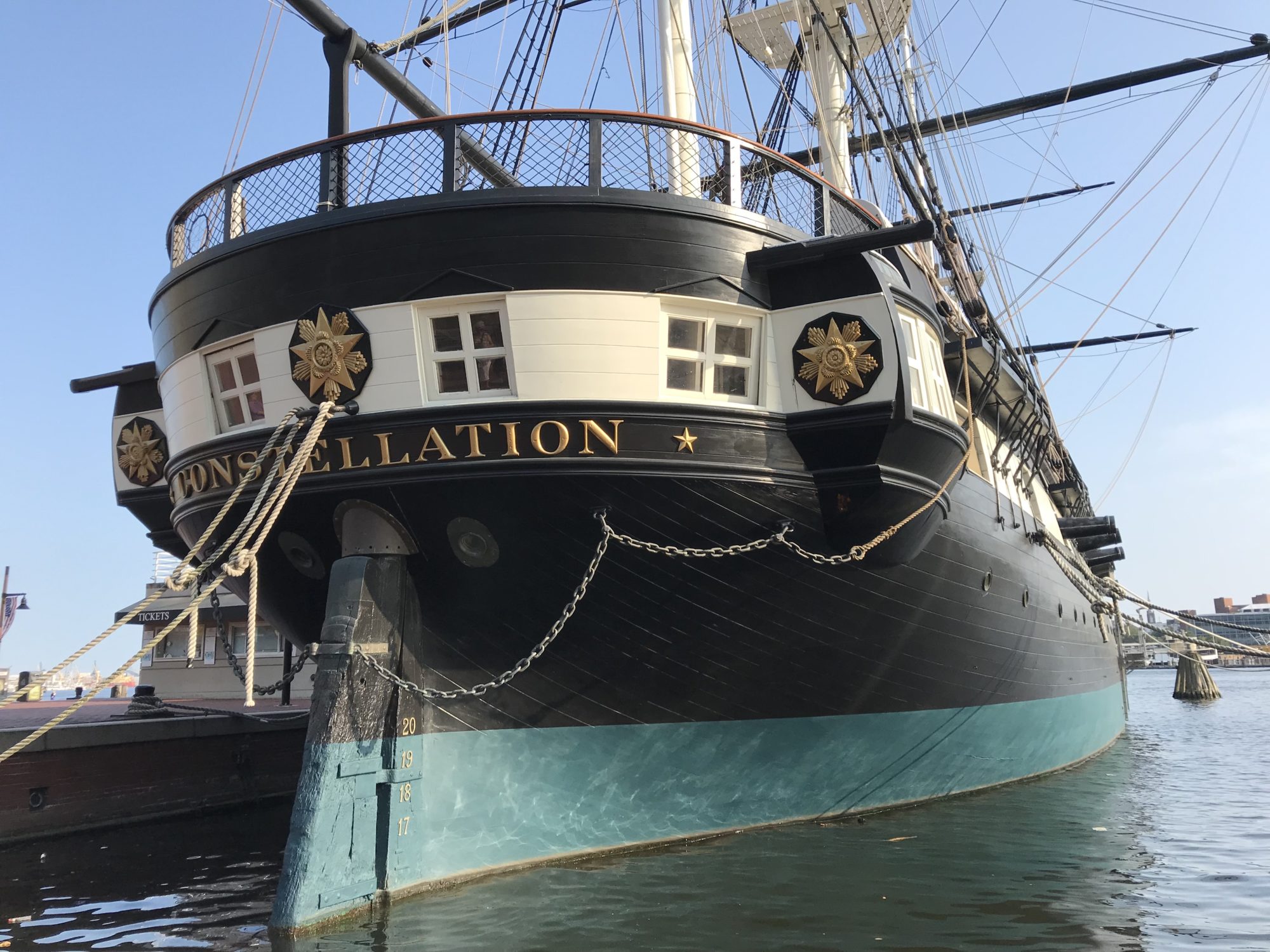
The Two Fultons
Noah and Adam Brown also constructed another ship during the War of 1812 which confuses the narrative. They worked with inventor Robert Fulton to create the Demologos, less a ship and more a floating battery of cannons. Equipped with a steam engine, 32 guns, and sides five feet thick, Demologos was unsuited for the high seas and was instead designed to roam New York Harbor and blast any ships that might dare to enter the Narrows. Completed in 1815, after the war ended and Fulton had died of pneumonia, his invention was renamed in his honor, and it took to sea exactly twice, in 1815 and 1817, and was never commissioned into the Navy.
The ship is often incorrectly cited as being built in the Navy Yard, but in fact the Browns built it across the river at their own yard in Corlears Hook; this confusion arises in part from the fact that in 1837, the Navy Yard did build another steamship that was officially called USS Fulton, and this was the first steamship built and commissioned by the Navy (Demologos, though a steamship, was neither of these things). The old Demologos served the next 12 years as a floating barracks, until it was destroyed in an explosion that killed 31 people on June 4, 1829.
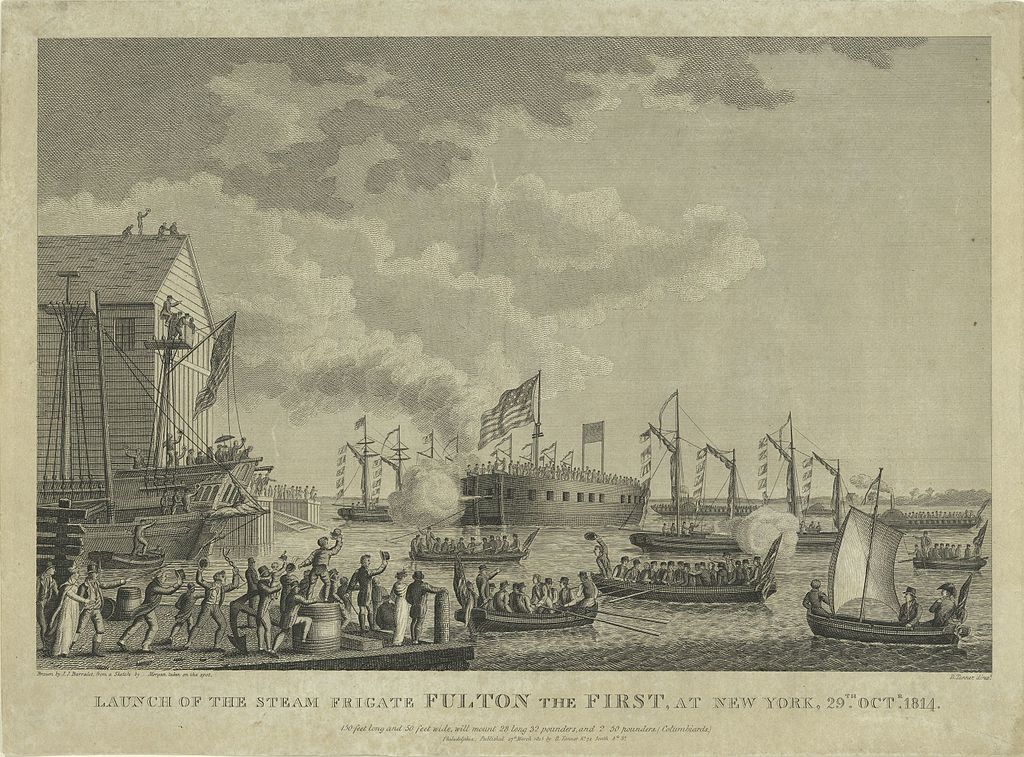
The First Ship, USS Ohio
The one ship that ticks all the boxes: designed and built by the US Navy, at the New York Navy Yard, and commissioned into Navy service, is the 74-gun ship-of-the-line USS Ohio. Designed by master builder Henry Eckford, Ohio was laid down in 1817 and launched three years later … and immediately placed “in ordinary,” or in reserve. It was another 18 years before the ship was commissioned, after an extensive rebuild, and officially entered Navy service. So even this ship’s title as the first Brooklyn Navy Yard ship is contested, as a half-dozen other ships built at the Yard entered commission before the Ohio.
In short, when you’re talking about an institution as old, large, and complicated as the Navy, nothing is ever simple.

